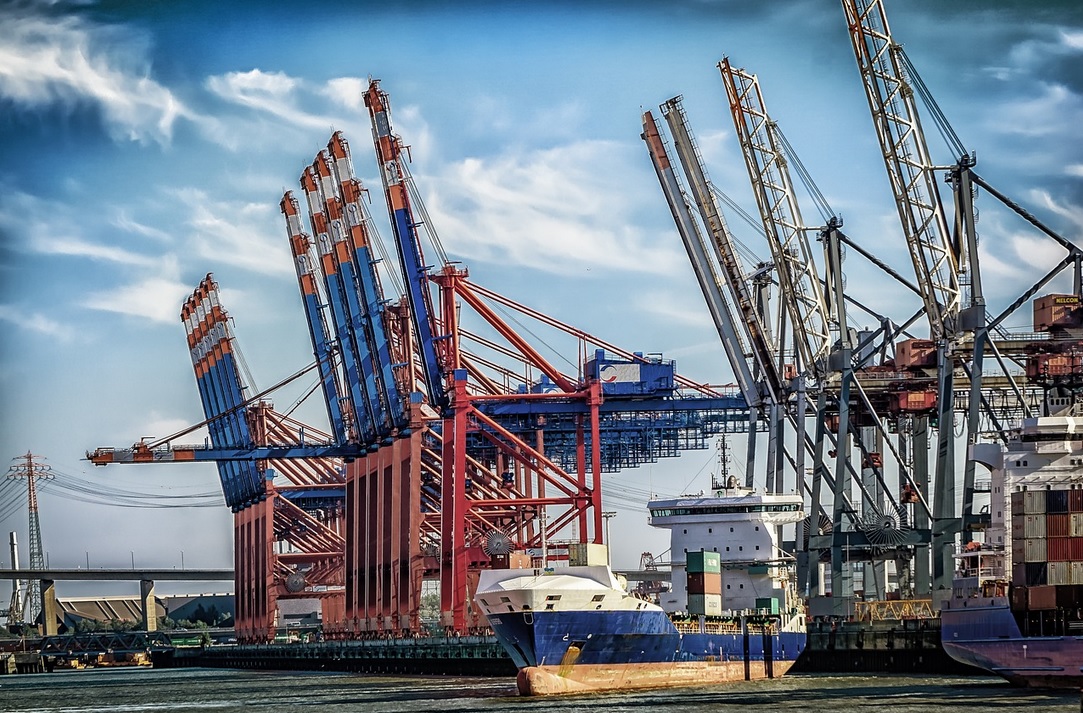
By Josh Lehner,
Oregon Office of Economic Analysis
Oregon regularly ranks as the 10th to 15th most trade-dependent state in the nation, depending upon the year. The Brookings Institute goes so far as to rank the Portland region as a Top 10 most trade-dependent metropolitan area. And a lot of Oregon-produced goods flow through the Portland region on their way to customers around the globe. As such, there is no question our regional economy, and the Pacific Northwest more broadly, has a larger exposure to trade than many parts of the country. In particular, our trade is primarily with other Pacific Rim countries, Canada and China being the most prominent. Overall these trade relations have been beneficial for Oregon and Northwest firms and products. However, when the script flips, as it may be starting to, these previous tailwinds for economic growth can turn to headwinds.
Over the past two decades, Oregon’s business ties and relationships with China have increased considerably. In fact, since the Great Recession, China has been Oregon’s top destination for our exports of merchandise goods (or physical products). The total value of these exports range from $3-6 billion per year in recent years. OK, so what does all of this imply for Oregon’s exposure to the tariff saber rattling? We try to answer that in this edition of the Graph of the Week.
 To date there have been a few rounds of tit-for-tat tariff announcements. To get at the impacted sectors we took China’s official WTO submission for the retaliation against the U.S. aluminum and steel tariffs, and combined it with the great work that the Peterson Institute for International Economics’ Chad Brown did on the more recent round that included soybeans, autos, and the like. Matching these industries with available export data shows that about $500 million of Oregon exports to China are likely impacted. This represents our first effort along these lines and will adjust our estimates moving forward as the list of tariffs change, and/or we get better data or a better methodology.
To date there have been a few rounds of tit-for-tat tariff announcements. To get at the impacted sectors we took China’s official WTO submission for the retaliation against the U.S. aluminum and steel tariffs, and combined it with the great work that the Peterson Institute for International Economics’ Chad Brown did on the more recent round that included soybeans, autos, and the like. Matching these industries with available export data shows that about $500 million of Oregon exports to China are likely impacted. This represents our first effort along these lines and will adjust our estimates moving forward as the list of tariffs change, and/or we get better data or a better methodology.
Obviously $500 million is a big number. However, it may also help to place it in context of the overall economy. Total trade with China is about 2% of Oregon GDP in recent years, at least in terms of its size. This does not mean exports to China account for 2% of GDP, or 2% of economic growth, rather we are using GDP as a measure to help frame the discussion. The tariff-impacted exports to China are about 0.2% of state GDP in terms of their size. This essentially matches the U.S. estimates of 0.3%. Oregon’s large high-tech exports to China explain why the tariff-impacted exports are a relatively small share of the total. Tech exports so far are not on the list and are mostly within firm shipments of intermediate goods and not necessarily truly selling products on the open market.
However, even these total figures may overstate the potential impact of the tariffs in Oregon for a couple of reasons. First, even if these tariffs do get put in place, trade will not plunge to zero overnight. That said, higher prices due to the tariffs are likely to weigh on exports and we will see declines. Second, the export data is imprecise even as the Census does its best to trace exports back to where they came from. In particular, the data show that Oregon has a couple hundred million dollars of auto exports to China. Obviously Oregon is not an auto manufacturing hub. However a lot of autos do make their way to Oregon and then out into the world. I have heard various stories over the years, but we may even do a final touch-up or two on the cars before they are loaded and shipped out. To the extent auto exports decline, Oregon will see a drop in export-related jobs and activities, just maybe not hundreds of millions of dollars worth*.
Bottom Line: Oregon has a larger trade exposure to China than most states. Historically this has been beneficial for local firms. However as the trade winds shift, this exposure has the potential to be a drag on the regional economy. Offsetting this risk somewhat is the fact that Oregon’s trade exposure on tariff-impacted sectors is right around the U.S. average, and likely somewhat lower once data issues are taken into account. So far, this bilateral saber rattling could result in some clear economic losers in Oregon — like farmers and aluminum scrap exporters — however it is unlikely to derail the regional economy. The main economic risk remains a broader trade war that disrupts global supply chains. Should this come to pass, via continued escalation, it will be a much bigger economic problem.
*Another possibility is that these truly are Oregon exports, but miscoded into the wrong category. For example, some of our machinery, or rail-related or heavy trucks could be showing up in the automobile sectors. This is also plausible given all of these products do fall within transportation equipment more broadly. Regardless, if autos do take a hit, we would still expect to see an export job-related hit locally.
Disclaimer: Articles featured on Oregon Report are the creation, responsibility and opinion of the authoring individual or organization which is featured at the top of every article.

